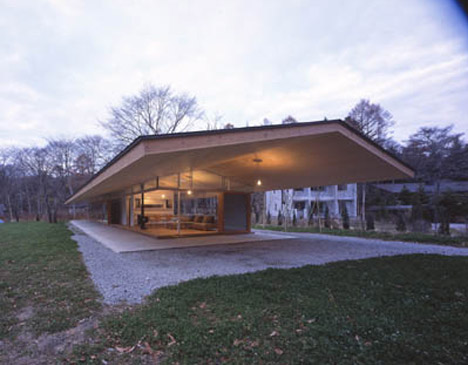
A look at some innovative, bizarre and one-of-a-kind homes and what makes them stand out. The World's 18 Strangest Homes.
(thanks Linda)"

 Today's DataQuick numbers for December ranged from a small uptick for Los Angeles to a small downtick for Ventura County, overall with little direction.
Today's DataQuick numbers for December ranged from a small uptick for Los Angeles to a small downtick for Ventura County, overall with little direction.
Los Angeles County's median was $339K, now down 38.4% from its peak in August 2007. Volumes were up 31% year-to-year from December 2008. (October DataQuick post)
That left Los Angeles County prices at August 2003, Orange County at August 2003, Ventura County at March 2003, and San Diego County at July 2002.
The listing for this two-bedroom, two-bath 1920s bungalow in West Hollywood notes the 'gorgeous mature trees throughout the property,' and indeed, the trees may be the best things about the property. At 1,386 square feet, the home is asking $849,000. It last sold in 1997 for $295,000. The location seems to be the question mark. This little slice of heaven is on Lexington---between Santa Monica and Fountain---just a stone's throw from that once-planned and now canceled housing project, a development some people thought might help to drive out the trannies from the hood.
· 7621 LEXINGTON Ave [Redfin]

Hip as in cool (not the type), green as in eco-friendly (not the book), this far-reaching wood roof ends far past the framing of the outer house walls – a shade-supplying cantilever that is awesomely out-of-scale with the small home sheltered beneath it.

If ceilings can be said to define spaces then this giant domestic overhang extends the interior area of the core home plans a good distance in all directions. Or, if porch and patio layouts provide a psychological buffer between a house and the exterior world, then the residents here must feel very cozy, safe and secure indeed.

Year-round shade saves on heating expenses while indirect daylight still comes in on all sides, reducing the need for artificially-powered lamps. Showing off the amazing strength of wood in conditions of extreme extension, this home was designed by Tezuka Architects and constructed via traditional framing and conventional carpentry techniques – just taken a few steps further than those simple a-frames we sketched as children.
